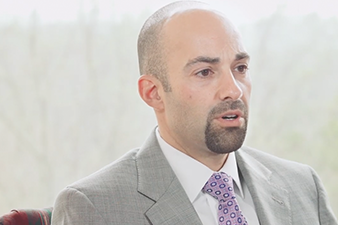
Strategies and Tactics for Long-Term Success: Q&A with Courtney Jackson and Betsy Curry
In this follow-up to our workshop presented at the Shared Services and Outsourcing Network’s digital Shared Services in Higher Education conference, experts Courtney Jackson and Betsy Curry go deeper with insights, tips, and recommendations on how to lean into the shared services journey.
Q: What are key considerations when establishing a shared services team?
A: When establishing shared services, it is critical to recognize the importance of streamlined and standardized policies and processes. It’s much easier to support a single college or all colleges on your campus if the policies and processes apply to everyone. This will require a fair amount of work up front and a lot of stakeholder involvement but is well worth the effort.
With streamlined process and structure in mind, ensure work activities are aligned to the right place. As you develop your structure and plan for the transition of work, it is imperative that you invest the time in assigning the work to the appropriate position(s) and then determine who has the right skillsets to perform the work. One of the biggest lessons learned when establishing a new service center is not to “lift and shift” individuals or work and move “as-is” processes to the service center. This will not set the service center or your employees up for future success.
Strive to design a tiered service model that encourages direct access for your faculty and staff (e.g., getting questions answered through a portal, “tier 0”), provides multiple channels for access (e.g., phone or email inquiries, “tier 1”), and establishes a specialized team (“tier 2”) to help with more complex issues or requests.
Now more than ever, you want to make sure you have a flexible model and built-in business continuity measures.
A focus on service reliability and rapid response will be critical. We have seen clients succeed with university-issued laptops and telephone systems that make signing on from home (or anywhere) easy and seamless. Your service center will become the first point of contact for many employees, and you need to ensure continuous coverage in the event of weather disruptions, natural disasters, or a pandemic like the one we are currently facing.
Finally, you will want to establish the appropriate spans of control on your teams. Often in higher education, we see people that have been promoted to manager levels based on tenure with the institution but are operating as individual contributors or only have one direct report. The recommended span is roughly six to eight employees per supervisor for more complex work (e.g., tier 2) and 10 to 12 employees per supervisor when work is similar and repeatable (e.g., tier 1).
Q: What does success look like for a shared services organization in higher education?
A: There are a few key characteristics that indicate success for a shared services organization in higher education, including:
Leadership and stakeholder buy-in
Ideally you have leaders who believe in the benefits of shared services and who will support your team. Make sure to involve administrative leaders as well as deans and faculty in your design and implementation and leverage them to help overcome obstacles you face. A supportive leadership team is critical for sustainable success.
A robust governance model
An organizational structure that reduces silos, promotes cross-functional collaboration, and empowers supervisors and employees to be accountable for their responsibilities is ideal.
Communication across campus
Our most successful clients are good communicators with other leaders and departments across campus. By maintaining open lines of communication, customer adoption and satisfaction can be maintained.
A culture of continuous improvement
Focusing on continually improving operations will benefit the entire campus. Service centers that have dedicated roles focused on continuous improvement can collect insights from their customers (deans, faculty, and staff) across both administrative and academic units. They can evaluate customer feedback and work to implement improvements that can be deployed across the university. Additionally, continuous improvement teams often identify areas for improved service center training and communication, resulting in improved customer experience.
Data, data, data
By effectively promoting your successes, customers are more likely to continue to use your services. Some helpful data points you can share include:
- How many customers you are serving and their level of satisfaction
- How quickly various transactions are processed (i.e., cycle time)
- How quickly calls are answered and emails are responded to (i.e., meeting or exceeding committed levels of service)
Q: If we have limited funds, in which technologies should we first invest?
A: One of the best first investments is a suite of customer care technologies. Typically, these are purchased as a package and include an employee portal, knowledgebase (i.e., data repository), and case management system (i.e., ticket tracking system). In higher education, we often see multiple inboxes or vanity emails that are manually managed by the team. A case management system provides a robust mechanism for tracking and managing incoming requests from faculty and staff. Additionally, these systems provide the ability to track metrics, adherence to service level agreements, and various data and reporting tools to demonstrate how efficiently your shared services team is operating. Of course, this type of investment is better suited to serve an entire institution rather than just one college and can also be used across a variety of functions (e.g., HR, Finance, IT, Facilities, etc.).
Case management systems range in cost and features. If you would like to discuss this more in depth, contact us so that we can walk you through solutions we have seen work well for our clients.
Q: How do we convince our leadership that our current model isn’t “good enough” or that we have room to move toward a more efficient shared services model?
A: Great question. We have found that doing a deep-dive evaluation into particular functions or processes can help identify pain points as well as opportunities. For example, we recently assessed a client’s procurement function. This involved evaluating existing policies compared to peer institutions, reviewing processes, analyzing procurement and T&E spend data, reviewing procurement system functionality, and performing a work activity assessment survey across campus to identify all procurement-related work being performed.
Our Results Highlighted
Outdated Policies
High-Level Managers Performing Non-Value-Added Work
Unnecessary and Inconsistent Approvals
Redundant and Manual Processes
We recommended our client pursue a more efficient service delivery model, and we made sure to back up that recommendation with the quantitative data as well as the anecdotal information we collected.
Another proven approach is to identify several key stakeholders and service recipients across the institution and spend time talking to them about processes that are working well and those that are not. Generally, you will identify consistent pain points that exist in different units with various faculty and staff. When you can demonstrate where potential processes or practices are “broken,” especially when faculty are spending time manually completing these processes rather than teaching or researching, leadership is more apt to discuss areas for service improvements. This can be a solid launching point toward an overall new service delivery model.
Q: I have a well-established shared services team. What can we do to further demonstrate our value to the university?
A: Look beyond your current customer population. Could you provide services to other colleges at your institution that are not currently served, other satellite campuses in your network, or even other universities within your state that may be using the same systems? Perhaps now is the time to look beyond your campus and into opportunities that exist elsewhere.
You could also expand services within an existing function or add a new function. Oftentimes, we see a shared services organization that supports one to two functions (e.g., HR and Financial Services), but you could consider expanding into pre- or post-award Contracts and Grants, Facilities, IT, or Student Services. What processes are major pain points for your faculty or staff? Are there functions that are closely integrated and would benefit from breaking existing silos and focusing on an end-to-end approach (e.g., Financial Services and post-award Contracts and Grants)? These processes can be natural or complementary additions to your current services.
Lastly, consider who else may need support. Because you already have a team of individuals that is accustomed to providing great customer service, consider other organizations that may need help with responding to questions. This could mean supporting your state by responding to inquiries about unemployment or supporting your local hospital by answering questions about changing protocols.
About the Authors
Courtney Jackson is a partner at ScottMadden and leads the firm’s higher education practice. Betsy Curry is a manager.
































































